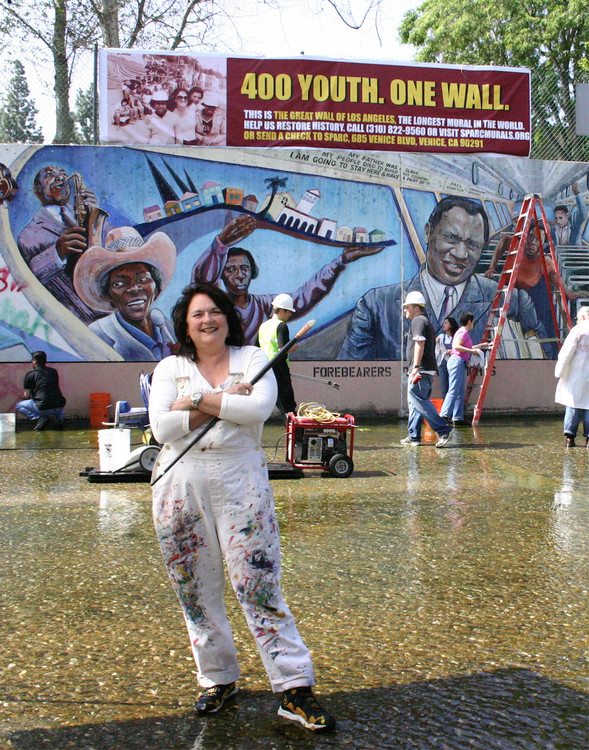
Judy Baca
Judith F. Baca
Artist, Educator, Scholar/Activist and Community Arts Pioneer Founder of the Social and Public Art Resource Center
What sets Baca’s work as a visual artist apart from many other artists, is an inspired ability to teach and a creative pursuit of relevancy in developing educational and community based art methodologies. Baca has stood for art in the service of equity for all people and the integration of one’s ethics with creative expression.
Baca is a painter and muralist, monument builder, and scholar who have been teaching art in the UC system since 1984. She was the founder of the first City of Los Angeles Mural Program in 1974, which evolved into a community arts organization known as the Social and Public Art Resource Center (SPARC) which was has been creating sites of public memory since 1976. She continues to serve as its artistic director and focuses her creative energy in the UCLA@SPARC Digital/Mural Lab, employing digital technology to create social justice art.
Baca’s public arts initiatives reflect the lives and concerns of populations that have been historically disenfranchised, including women, the working poor, youth, the elderly, LGBT and immigrant communities. Throughout Los Angeles and increasingly in national and international venues, Baca’s projects have often been created in impoverished neighborhoods that have been revitalized and energized by the attention these works have brought and the excitement they have generated. Underlying all of Baca and SPARC’S activities is the profound conviction that the voices of disenfranchised communities need to be heard and that the preservation of a vital commons is critical to a healthy civil society. Baca’s work channels the creative process of monument design to develop models for the transformation of both physical and social environments in public spaces. And they are monumental, both in space and time: The Great Wall of Los Angeles is ‘tattooed’ along a flood control channel in the San Fernando Valley and employed over 400 at risk youth and their families from diverse social and economic backgrounds working with artists, oral historians, ethnologists, scholars, and hundreds of community members. The Great Wall depicts a 1⁄2 mile long multi-cultural history of California from pre-history through the 1950’s. It was begun in 1976 and plans are underway for its next four decades of evolution.
Baca’s artworks are as much about the process of how they’re made as they are about the end result. She begins as an artist from the awareness that the land has memory that must be expressed and creates art that is shaped by an interactive relationship among history, people and place, that marks the dignity of hidden historical precedents, restores connections and stimulates new relationships into the future. Baca’s public artworks focus on revealing and reconciling diverse peoples’ struggles for their rights and affirm the connections of each community to that place. She gives form to monuments that rise up out of neighborhoods, rather than being imposed upon them. Together with the people who live there, they co-create monumental public art, places that become “sites of public memory.”
Portions of this bio taken from Nina Simons co-founder of the Bioneers biographical sketch of Judy Baca. The Bioneers are engaged citizens from all backgrounds and fields who focus on solving our world’s most urgent problems within a framework of interdependence by networking scientists, artists, scholars and others internationally to work together.
To learn about Baca and SPARC, visit: www.SPARCinLA.org or www.judybaca.com
SPARC – ART | COMMUNITY | EDUCATION | SOCIAL JUSTICE | SINCE 1976
685 Venice Blvd. Venice, CA 90291
310/822-9560
